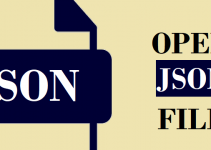
In today’s hyperconnected world, where our lives are increasingly intertwined with the digital realm, network connectivity issues have become a modern-day nemesis that can disrupt our productivity, communication, and overall digital experience. Whether you’re navigating the intricate web of Wi-Fi, Ethernet, or mobile data connections, the frustration of encountering network problems is a common thread that binds us all.
In this era where the internet serves as the backbone of our daily routines, understanding and effectively addressing the most common network connection errors has become a skill and a necessity. From the maddeningly slow loading times to the dreaded “No Internet Connection” error message, the landscape of network problems is vast and varied. Consult with Managed IT Services Raleigh experts to troubleshoot the network connection issues.
This article will explore the biggest problems with network connectivity and the ways to troubleshoot network connectivity.
7 Common Network Connection Problems
No Internet Access
One of the most common causes of network connectivity problems businesses face is the inability to access the internet. This can be a frustrating problem, as it prevents users from browsing the web, checking emails, and accessing online services. Several potential causes for this issue include problems with the router or modem, issues with the ISP, or connectivity problems with the device itself.
To address this issue, follow these troubleshooting steps, reset the router or modem by disconnecting it from power for a few seconds and then reconnecting it. If that doesn’t work, try restarting the device’s Wi-Fi connection or checking if other devices on the same network are experiencing similar issues. If all else fails, contact your ISP for further assistance.
Slow Internet Speed
Slow internet speed is one of the most common network connection issues that users encounter. This can be frustrating and significantly affect productivity, especially when it comes to tasks requiring a fast and stable internet connection. Several factors can contribute to slow internet speed, such as network congestion, a weak Wi-Fi signal, or even issues with your internet service provider.
To troubleshoot network connectivity, you can take a few steps. First, try restarting your modem and router to refresh the connection. You can also check for any firmware updates for your devices and install them if necessary. In addition, make sure that there are no obstructions between your device and the router that could weaken the Wi-Fi signal.
Limited Connectivity
Limited connectivity is a common network connection issue that many people experience. It occurs when your device is connected to a network, but you are unable to access the internet or other network resources. There can be several causes for limited connectivity, including issues with your router, modem, or network settings.
To solve this problem, you can take a few troubleshooting steps. First, restart your router and modem to see if that resolves the issue. If not, check your network settings to ensure that you are connected to the correct network and that your IP address and DNS settings are configured correctly. You can also try resetting your network settings or updating your device’s firmware. If you are currently facing limited connectivity issues, visit the professionals at IT Consulting Charlotte.
Intermittent Connection
One of the most common network connection issues users experience is intermittent connection. This refers to a situation where the internet connection is unstable and frequently drops out. Several potential causes for intermittent connection include wireless interference, outdated firmware or drivers, and network congestion.
To solve this issue, there are a few steps that you can take. Firstly, try moving closer to your router to ensure a stronger signal. Furthermore, you can change the wireless channel on your router to avoid interference from other devices. Updating your firmware and drivers can help resolve bugs or compatibility issues. If the problem persists, contact your internet service provider for further assistance.
IP Address Conflict
An IP address conflict is a common network connection issue that can cause disruptions to internet connectivity. This occurs when two or more devices on the same network are assigned the same IP address, leading to conflicts and data transmission issues. To resolve this problem, there are a few steps you can take.
First, try restarting your router and all connected devices. It can help refresh the network and allocate new IP addresses. If that doesn’t work, you can manually assign static IP addresses to each device on the web to ensure they are unique. Checking for software or firmware updates for your router and devices can help resolve IP address conflicts.
Firewall/Antivirus Blocking
One of the most common network connection issues that users may encounter is when their firewall or antivirus software blocks their connection. Firewalls and antivirus programs are designed to protect your computer from potential threats, but sometimes, they can be too cautious and block legitimate network connections. If you are experiencing this issue, there are a few steps you can take to resolve it.
First, check your firewall or antivirus settings to see if there is an option to allow the specific program or website that you are trying to connect to. If not, you may need to temporarily turn off your firewall or antivirus software while establishing the connection. However, it is essential to re-enable these security measures once you have finished troubleshooting to ensure the ongoing protection of your computer.
Advanced Configuration Issues
Advanced configuration issues can be a source of frustration for many businesses experiencing network connection problems. These issues often require a deeper understanding of network settings and protocols, making them more challenging to troubleshoot. Some common advanced configuration issues include IP address conflicts, DNS server problems, firewall restrictions, and port forwarding complications.
To solve these problems, it is recommended to consult technical documentation or seek assistance from an IT professional who can guide you on configuring network settings correctly. Staying updated with the latest firmware and software updates for your network devices can help prevent advanced configuration issues from occurring in the first place.
In Conclusion
Understanding and addressing common network connection issues is essential in today’s digitally connected world. Identifying and troubleshooting problems can ensure a smoother online experience and avoid unnecessary frustration. Remember to start with the basics, like checking your hardware and restarting your devices, before delving into more advanced troubleshooting steps. Additionally, staying informed about the latest network technologies and security measures can help you proactively prevent future issues. With a systematic approach, you can overcome most network connection issues and enjoy a reliable and seamless online experience.



